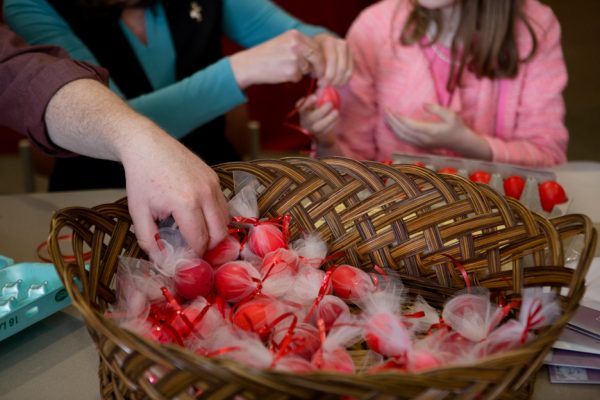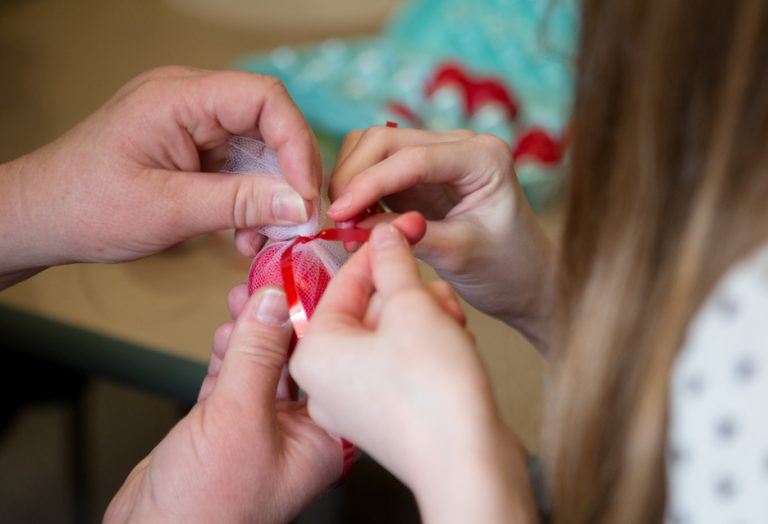Tsougrisma
Text by Amy DeRogatis
Recordings by Emma Pittsley
Photographs and Audio Editing by Lauren Pond
On Saturday, April 15, the Michigan State ARSP research team attended the Holy Saturday Divine Liturgy service at Holy Trinity Greek Orthodox Church in Lansing, Michigan. After the service, we joined congregants to help wrap red eggs for that evening’s celebration after the Paschal Vigil. During Thursday of Holy Week, congregation members had dropped off dozens of eggs that had been dyed bright red. These were ready to be wrapped in tulle on Saturday.
It is traditional in Greek households and in Greek Orthodox churches to crack red eggs at Easter, symbolizing Christ’s resurrection. This is often part of the game known as “Tsougrisma,” meaning egg cracking or clinking. This game starts with two people tapping red eggs together. It is traditional for the eldest member of the family to begin. With the first tap, the players say, “Christo Anesti” (Christ has risen). The player whose egg does not crack moves to the next person with an uncracked egg. With this tap, players say, “Alithos Anesti” (Indeed, Christ is risen). The person with the uncracked egg at the end of the game wins, and, it is believed, will have good luck for the following year.
This traditional game has deep symbolism in the Easter celebration. The eggs are symbolic of the liturgy of the end of Holy Week. The egg shell symbolizes the tomb where Jesus was placed after his death. Unlike the pastel colors used for Easter eggs in Western Christian traditions, the deep red color used by Greek Orthodox congregations symbolizes the blood of Christ. Cracking the egg represents Christ’s resurrection. The egg itself symbolizes eternal life.
But what about the tulle wrapping? What does that represent? Nothing. As Fr. Mark Sitsiema explained at the end of the service, the tulle is wrapped around the eggs so that when the congregation cracks eggs at the end of Saturday night’s Paschal Vigil at midnight, he well not get red dye on his vestments. Thanks to the thin cloth covering the eggs, congregants’ hands and clothes also will stay cleaner.
In this clip, you will hear co-PI Amy DeRogatis and her son, as well as Emma Pittsley, an undergraduate researcher, wrapping eggs after the service. It is hard to pick out their voices over the happy chatter of other adults and children wrapping eggs. If you listen closely, you will hear Amy DeRogatis say “oops” when she drops a red egg, and her son say, “that was a close one.” In the spirit of our larger research question, we leave you with a riddle: If an ARSP researcher drops an egg during an audio recording and no one but her son hears it, is the sound religious?




